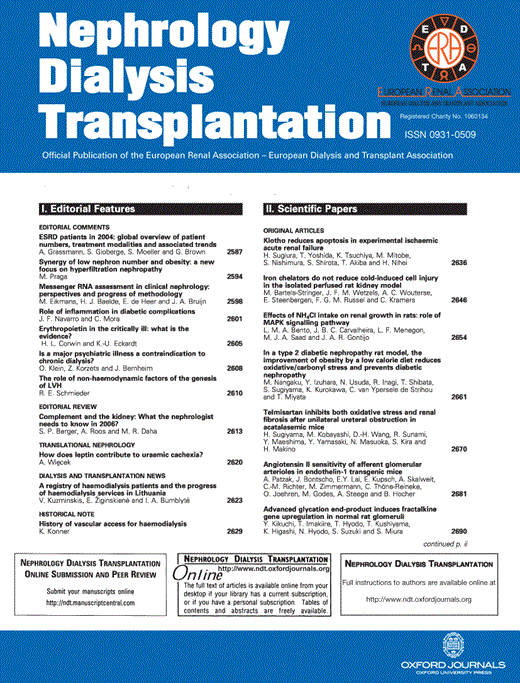-
Views
-
Cite
Cite
P. Cochat, A. Deloraine, M. Rotily, F. Olive, I. Liponski, N. Deries, Epidemiology of primary hyperoxaluria type 1, Nephrology Dialysis Transplantation, Volume 10, Issue supp8, 1995, Pages 3–7, https://doi.org/10.1093/ndt/10.supp8.3
Close - Share Icon Share
Abstract
Primary hyperoxaluria type 1 (PH1) always leads to oxalate accumulation throughout the body (oxalosis). Currently available epidemiological data only concern patients with end-stage kidney disease requiring renal replacement therapy (RRT). French nephrologists have been questioned about PH1 patients who were under their care between 1988 and 1992. Exhaustive answers were obtained and 90 cases of PH1 were collected. The average prevalence rate of PH1 was 1.05/10 6 and its average incidence rate was 0.12/10 6 /year. The median age at onset was 5 years (0–63) and initial symptoms involved the urinary tract in 82% of the cases. Half the patients were younger than 10 years at the time of diagnosis on the basis of urine oxalate (89%)±urine glycolate (43±)±plasma oxalate (71%)±hepatic alanine:glyoxylate aminotransferase activity (48%). At the time of the survey, 36% of patients were on a conservative treatment, 37% were transplanted and 27% were on maintenance haemodialysis; the crude mortality rate was 19% (median age 36 years). Patients on dialysis started RRT at a median age of 25 years. Transplanted patients received their first transplant at a median age of 29.5 years; among those patients with more than 1 year follow-up, 15 received an isolated kidney transplant (one success), one had an isolated liver transplant (one success) and 10 combined liver-kidney transplant (eight successes). These data confirm the rarity of PH1 together with its poor prognosis; as shown in the European experience, early combined liver-kidney transplantation seems to be the best therapeutic proposal.
- hemodialysis
- renal transplantation
- kidney failure, chronic
- epidemiology
- age of onset
- alanine
- follow-up
- glycolates
- glyoxylates
- hyperoxaluria, primary
- liver transplantation
- oxalates
- renal replacement therapy
- transaminases
- urinary tract
- diagnosis
- kidney
- liver
- mortality
- transplantation
- conservative treatment
- urine oxalate measurement







Comments